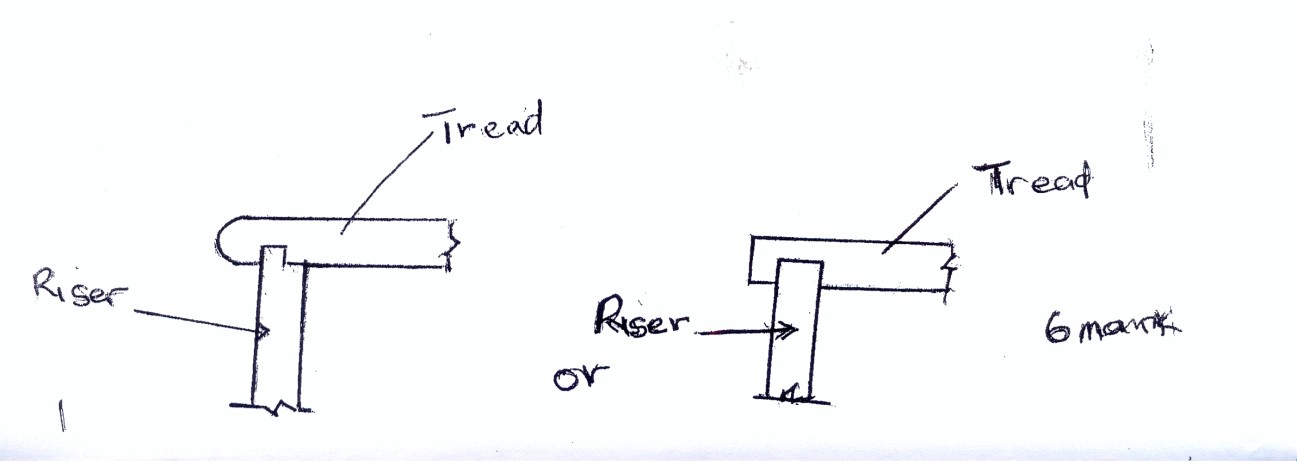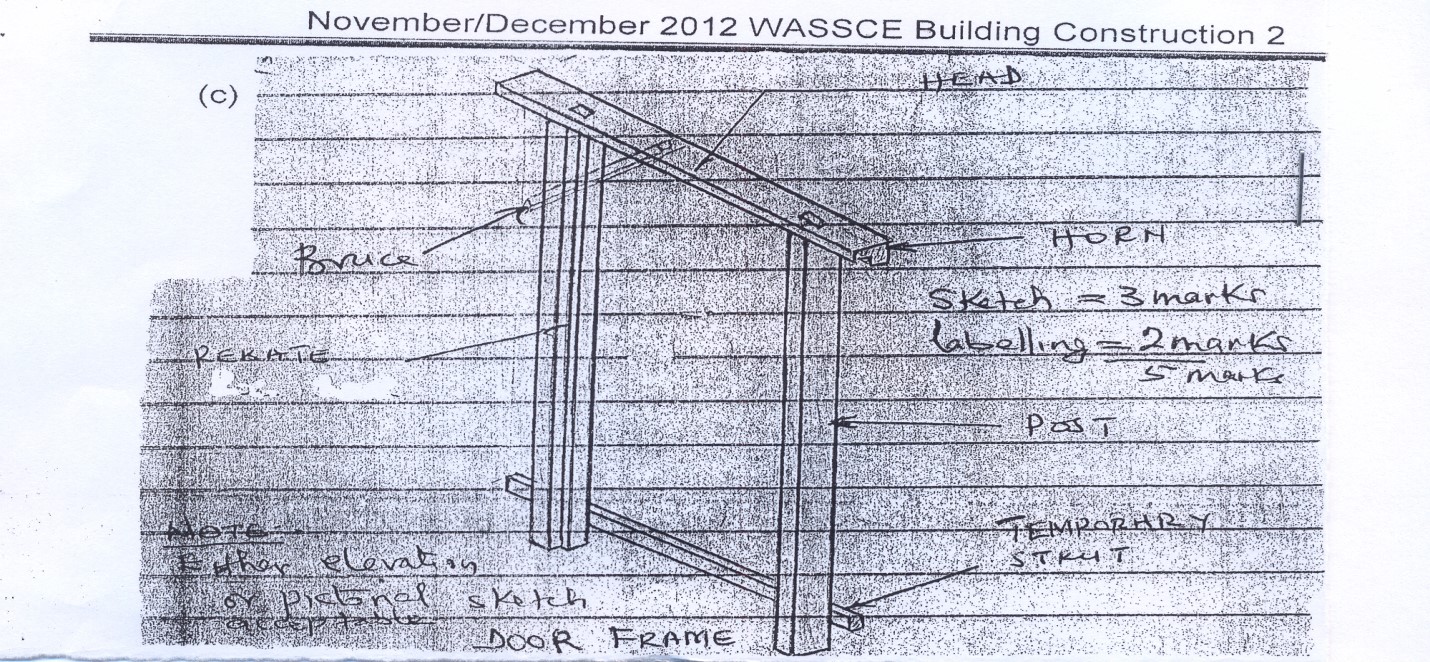|
Question 3
|
- State two advantages in the use of precast lintel over cast in-situ lintel.
- Sketch to illustrate two methods of fixing risers to treads in a timber stair construction.
- Sketch a door frame and label the following parts:
- jamb;
- head;
- horn;
- rebate.
|
| _____________________________________________________________________________________________________ |
|
Most candidates were able to state the advantages in the use of precast lintel over cast in-situ lintel.
However, they were unable to:
- use sketch to illustrate methods of fixing risers to treads in a timber stair construction;
- sketch a door frame;
- label the given parts of a door frame correctly.
The expected response to question 3 is as given below:
- The advantages of precast lintels over the cast in-situ lintels are that:
- no elaborate in-situ formwork is required, a simple mould is all that is needed.
- it is more convenient to work with and a quality product is ensured.
- there is no danger of collapsing formwork.
- walling can progress uninterrupted, as there is no need to wait for the lintel to gain strength before continuing the walling process.
- It allows for speedy erection.
(b) 

|
|
|
|



